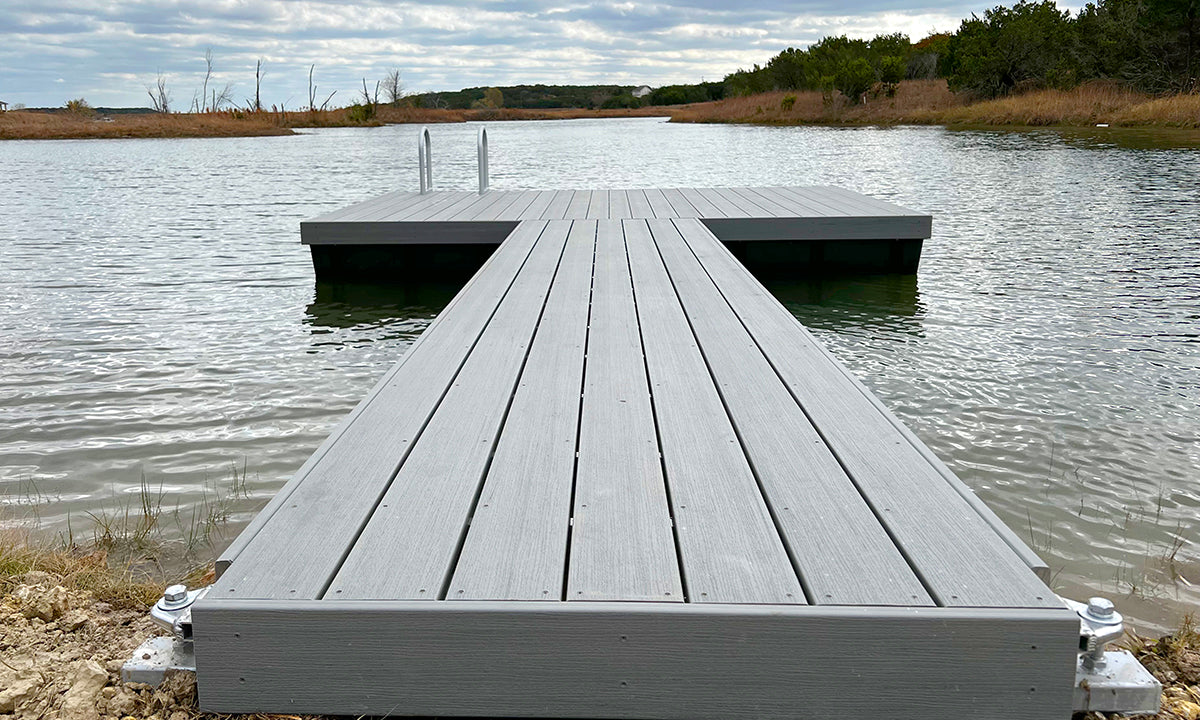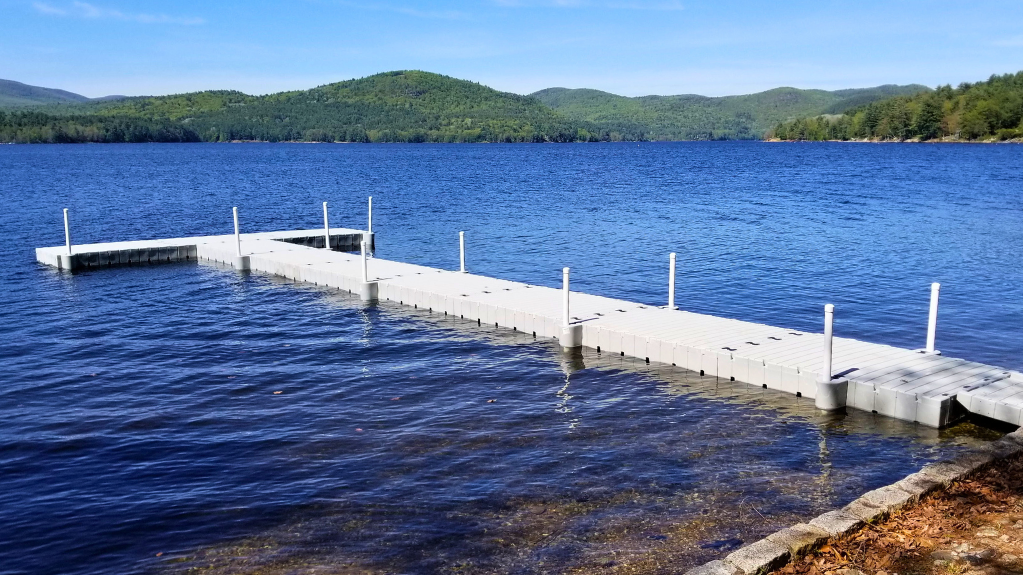Navigating the Options: Selecting the Right Dock Company for Your Floating Dock Task
Create the Perfect Docking Solution With Floating Docks
Floating docks existing a versatile solution for a selection of maritime needs, adjusting effortlessly to varying water levels and varied vessel types. As we discover the necessary aspects that contribute to the effectiveness of floating docks, a number of crucial factors regarding stability and maintenance will emerge, elevating inquiries regarding just how to maximize your docking experience.

Advantages of Floating Docks
Floating docks deal countless benefits that make them an optimal option for numerous maritime applications. Among the key advantages is their adaptability to altering water degrees. Unlike fixed docks, floating docks fluctuate with the trend, making certain regular accessibility for vessels. This feature is particularly important in areas susceptible to substantial tidal variations or seasonal water level modifications.
Additionally, floating docks are typically much easier and quicker to mount contrasted to typical set structures. Their modular design permits simple assembly and disassembly, helping with upkeep and moving when required. This flexibility is specifically valuable for momentary applications or in atmospheres where conditions might transform.
Floating docks additionally have a tendency to be much more ecologically pleasant, as they decrease disruption to the seabed and surrounding aquatic communities. Their resilient nature minimizes the risk of damages to marine life, advertising a healthier atmosphere. These docks can be tailored to accommodate numerous vessel sizes, making sure that they meet certain functional requirements.
Inevitably, the mix of adaptability, convenience of setup, and environmental considerations makes floating docks a very reliable remedy for a vast array of maritime demands.
Picking the Right Materials
Picking the suitable products for floating docks is important to make certain durability, toughness, and security. The choice of materials directly influences the dock's efficiency in numerous ecological problems, including exposure to water, sunlight, and potential wear from aquatic traffic.
Common materials used for floating docks consist of light weight aluminum, timber, and high-density polyethylene (HDPE) Light weight aluminum is light-weight, corrosion-resistant, and needs marginal upkeep, making it an exceptional selection for long life. Its preliminary price can be higher compared to various other products.
Timber, while visually attractive and offering a standard look, can be susceptible to rot and insect damages otherwise appropriately treated. Utilizing pressure-treated wood or naturally sturdy varieties like cedar or redwood can minimize these concerns.
HDPE is a prominent choice due to its resistance to UV rays and chemicals, in addition to being eco pleasant. floating dock company. It is offered and light-weight in different shades, allowing for customization
Inevitably, the best product choice will certainly depend on details requirements, consisting of budget, wanted appearances, and ecological factors to consider. Cautious evaluation of these aspects will lead to a resistant and effective floating dock service.
Style Factors To Consider for Security
When creating floating docks, guaranteeing stability is a fundamental aspect that can considerably impact their functionality and security. Stability in floating dock layout is influenced by various aspects, including buoyancy, weight distribution, and the plan of elements. An optimum buoyancy system should use products that give sufficient lift while lessening weight. This equilibrium ensures that the dock remains above water, even under varying tons.
Weight circulation is critical; equally dispersing tons across the dock stops turning and enhances stability. Wider designs can use boosted stability, particularly in harsh water conditions, while longer docks might require additional assistances to avoid sagging.
An additional vital factor to consider is the environmental influence, including wave action and wind. Integrating functions such as sidewalls or skirting can help minimize the results of ecological forces, maintaining security in adverse problems. Ultimately, a mix of thoughtful design, product selection, and understanding of ecological factors will certainly yield a drifting dock that meets both security and safety needs.
Installation Tips and Strategies

Following, safeguard the necessary permits and comply with neighborhood policies, which may dictate useful reference installment methods and environmental factors to consider. If required, engage a certified service provider experienced in floating dock setups. Use premium materials designed for aquatic atmospheres to improve toughness and durability.
When positioning the dock, straighten it alongside the shoreline to facilitate very easy gain access to. Guarantee that the anchoring system is durable, utilizing concrete blocks or helical supports to support the dock against wind and wave activity. It's vital to represent seasonal water degree changes, including possible Click This Link ice movement in cooler environments.
During the installation, confirm the dock's floatation and security prior to settling the anchoring. On a regular basis examine the installment for any type of indicators of wear or damage. By adhering to these techniques and pointers, you can accomplish a safe and secure, practical, and aesthetically pleasing floating dock installment that meets your demands.
Maintenance and Treatment Standards
Maintaining and caring for floating docks is crucial to lengthening their lifespan and making sure safe usage. Regular assessments should be performed to identify any type of indicators of wear, damages, or aquatic development. Look for cracks, loose fittings, or stained areas on the dock's surface, as these problems can jeopardize architectural stability.
Cleansing is essential. Use a pressure washer to remove algae, barnacles, and debris, which can accumulate over time. For stubborn growth, consider ecologically friendly cleaner that won't hurt marine life.
Furthermore, check the mooring lines and supports often to guarantee they are free and safe and secure from deterioration. Replace any frayed or harmed lines promptly to maintain security.
During extreme weather, such as tornados or freezing problems, take precautionary steps. Secure the dock with additional mooring lines and, if feasible, get rid of any kind of detachable components to avoid damage.
Verdict
Finally, the application of floating docks provides a flexible and efficient docking remedy ideal for different maritime applications. Their adaptability to fluctuating water degrees, integrated with a modular design, enables simple customization and moving. why not try here Choosing appropriate products enhances both toughness and visual allure, while cautious consideration of security makes sure safety and longevity. With correct setup and routine maintenance, floating docks can give reliable and effective docking experiences for a variety of vessels.
As we check out the essential aspects that add to the effectiveness of floating docks, several essential variables concerning security and maintenance will certainly emerge, increasing concerns concerning just how to maximize your docking experience. Unlike dealt with docks, floating docks surge and loss with the tide, guaranteeing regular ease of access for vessels.When making floating docks, guaranteeing security is a fundamental element that can dramatically affect their performance and safety and security. Stability in floating dock layout is influenced by various aspects, consisting of buoyancy, weight circulation, and the arrangement of elements. Inevitably, a mix of thoughtful layout, material choice, and understanding of ecological aspects will yield a drifting dock that meets both stability and security needs.